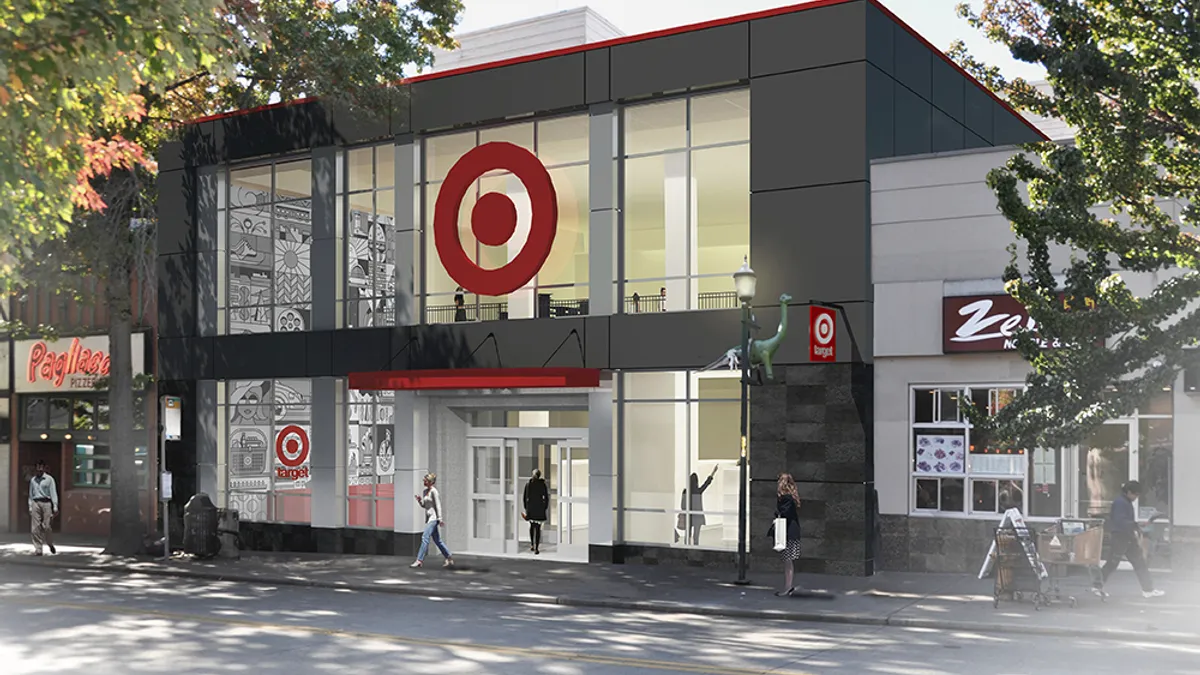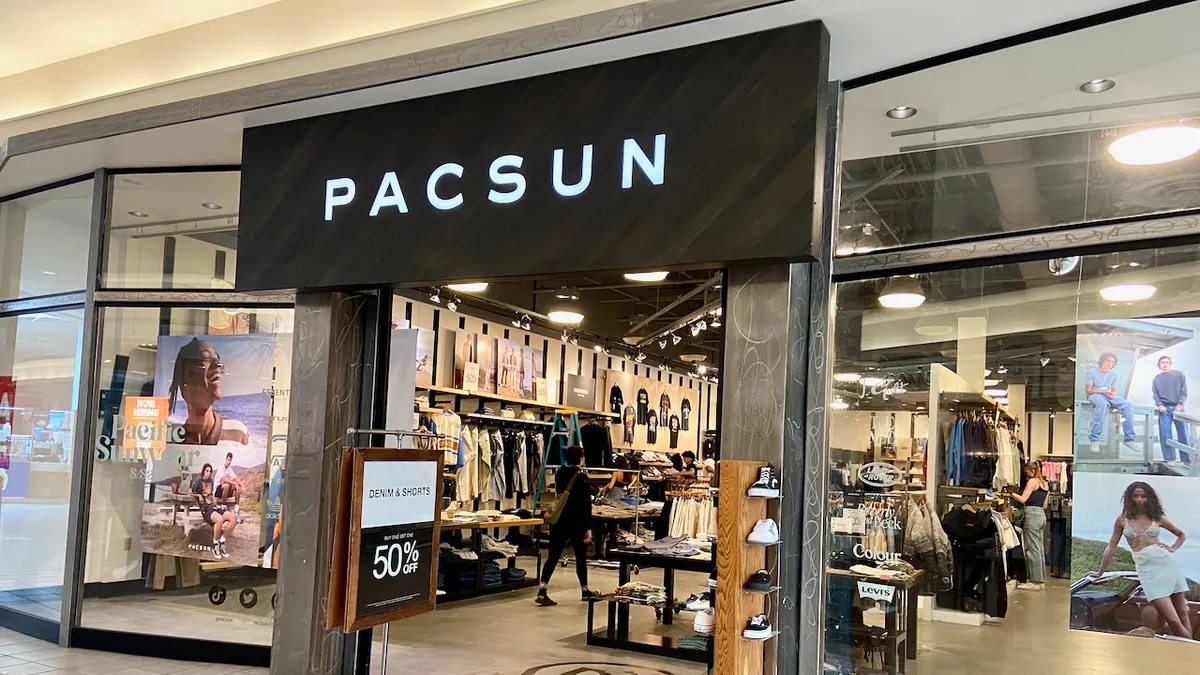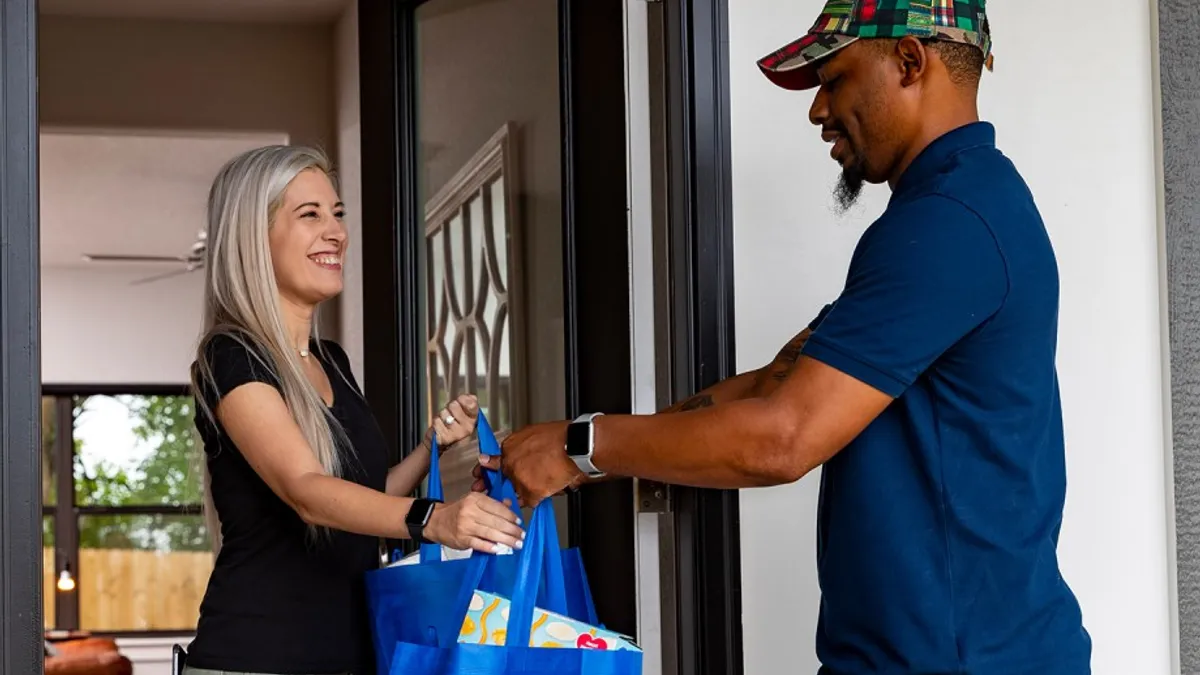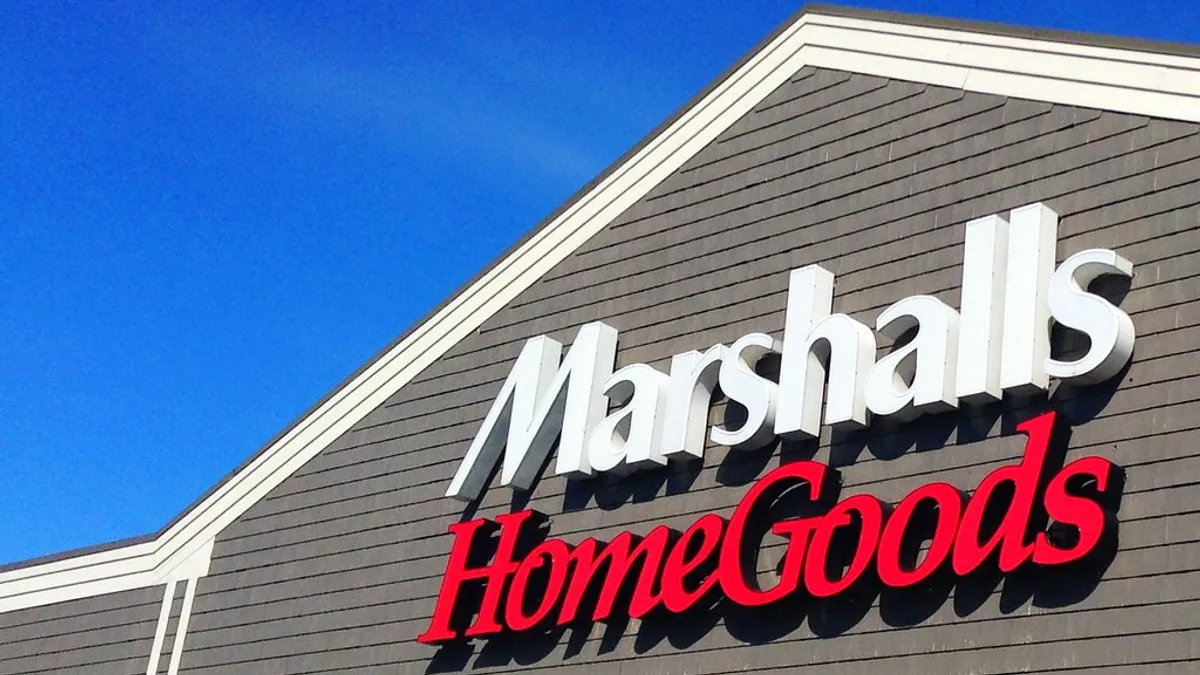In the modern retail world, a store isn’t just a store. Many retailers are starting to use some of their stores as mini distribution centers, as consumers demand faster fulfillment for online orders. Shipping online orders from brick-and-mortar locations not only increases customer options and speed, it can also offer big cost reductions for retailers.
"Retailers are looking for ways to meet those expectations created by the Amazons of the world," Jeffrey Neville, Senior Vice President and eCommerce and Digital Marketing Lead at Boston Retail Partners, told Supply Chain Dive.
But as retailers move to ship more items from their stores, they’ll have to strike a careful balance in their use of space, inventory and staff. Using stores as fulfillment centers can come with many challenges, and even the largest retailers are still refining their processes.
The growth of mini distribution centers
It has often been more efficient to consolidate and ship from large distribution centers, but competitive pressures and the availability of physical space has encouraged many retailers to change the equation, Greg Conner, Vice President of Global Sales at Bastian Solutions, told Supply Chain Dive.
"Having all these nodes and physical retail stores has been their magic pill on how to compete with others like Amazon and pure e-commerce players," Conner said.
Amazon’s move to more rapid fulfillment in recent years has created greater expectations for consumers, and 88% of shoppers say they would now pay for same-day delivery or faster, according to a survey by PwC. Nearly 80% of logistics companies also say they expect to provide same-day delivery by 2023, according to a recent study by Zebra Technologies.
"It’s allowing us to deliver faster for our guests than we could have before."

Jill Lewis
Target spokesperson
Despite the frequent headlines about the demise of brick-and-mortar retail, physical locations are as relevant as ever. 42% of retailers now say faster delivery of online orders is their top customer-facing priority, and many use stores to achieve that goal, according to a recent survey from the National Retail Federation. Large retailers such as Walmart, Home Depot, Best Buy and Dick’s Sporting Goods are now using many stores as mini distribution centers and shipping and fulfilling orders directly from stores.
Likewise, Amazon’s acquisition of Whole Foods in 2017 was partly to gain a physical footprint. And in July 2019, the company started offering in-store pickup at Rite Aid locations and accepting returns at Kohl’s.
How Target puts stores at the center of fulfillment
Target, which is currently remodeling 300 stores annually and is on track to complete 1,000 remodels by the end of 2020, is putting stores at the head of its fulfillment network to speed up delivery, Target spokesperson Jill Lewis told Supply Chain Dive.
"We have 1,800 plus stores across the country and three-fourths of Americans are within 10 miles of a Target store. They really work well to be our local fulfillment hub, and guests have more options," Lewis said.
While Target now offers free two-day shipping on most products, half of those shipments arrive in one day because they are mostly going through local stores, Lewis said. In the first quarter of 2019, Target stores handled 80% of the retailer’s digital volume, including pick up, drive up, same day delivery and shipping to homes.
Using stores as fulfillment centers not only increases customer satisfaction but is also 40% cheaper than shipping from an upstream warehouse, Lewis said. "We already own the building, the lights are on and we have a replenishment process ... it’s allowing us to deliver faster for our guests than we could have before," Lewis said.
Target announced in December 2017 its acquisition of same-day delivery platform Shipt, and it now offers same-day delivery in 1,500 stores across 47 states.
Balancing brick and mortar and digital inventory needs
Despite the benefits of shipping from store, there are many challenges that come with the model, Conner said. In order to fulfill orders from stores, retailers need robust ERP systems and WMS with clear supply and demand visibility across all channels. This often requires complex algorithms to determine the best shipping source, as proximity alone doesn’t make a location the best place to ship from, Conner said. Upcoming sales in a store or a surge in demand in a certain region could increase the demand for a product.
Equipment and space can also be issues. At the very least, retailers will need a scale, shipping stations, scanners and more "to ensure an efficient process," Neville said.
"Having all these nodes and physical retail stores has been their magic pill on how to compete with others like Amazon and pure e-commerce players."

Greg Conner
Vice President of Global Sales, Bastian Solutions
Even in large footprint stores like Target, there typically isn’t as much space for online orders, and retailers can be easily overwhelmed when high volumes of online orders start hitting their stockroom. Lewis said Target has improved its ship from store capabilities by "getting more precise upstream" to deliver exactly the product needed and through backend systems and robotics that free up store space.
There can also be pain points when it comes to labor, Conner said. In a standard distribution center, workers are trained and accustomed to doing the same operation over and over, which often leads to improved performance and greater efficiency. But when retail workers that aren’t specifically trained in those activities must do it sporadically, "it can become cumbersome and error rates go up," ;he said.
The future of faster fulfillment
Despite the challenges in managing inventory and labor, the trend of using stores as local fulfillment centers is expanding as customers demand products at a faster rate.
Some retailers have converted poorly performing or shuttered stores into distribution centers for omnichannel purchases. And teen apparel retailer Zumiez closed all its distribution centers in recent years and now uses what it calls a "fully localized fulfillment model" that ships all online orders direct from stores.
"It has also enabled them to introduce some things in the customer experience, such as handwritten notes from the manager, that wouldn’t be scalable in fulfillment centers"” Neville said.
Yet there is no one-size-fits-all solution for all retailers, Conner said. He believes retailers will move to a mix of flexible solutions that combine the use of distribution centers and store backroom fulfillment.
"The norm is that customers are expecting faster and cheaper fulfillment options," Neville said. "Retailers will continue to get pushed by consumers and innovation to do that."
This story was first published in our weekly newsletter, Supply Chain Dive: Operations. Sign up here.






















